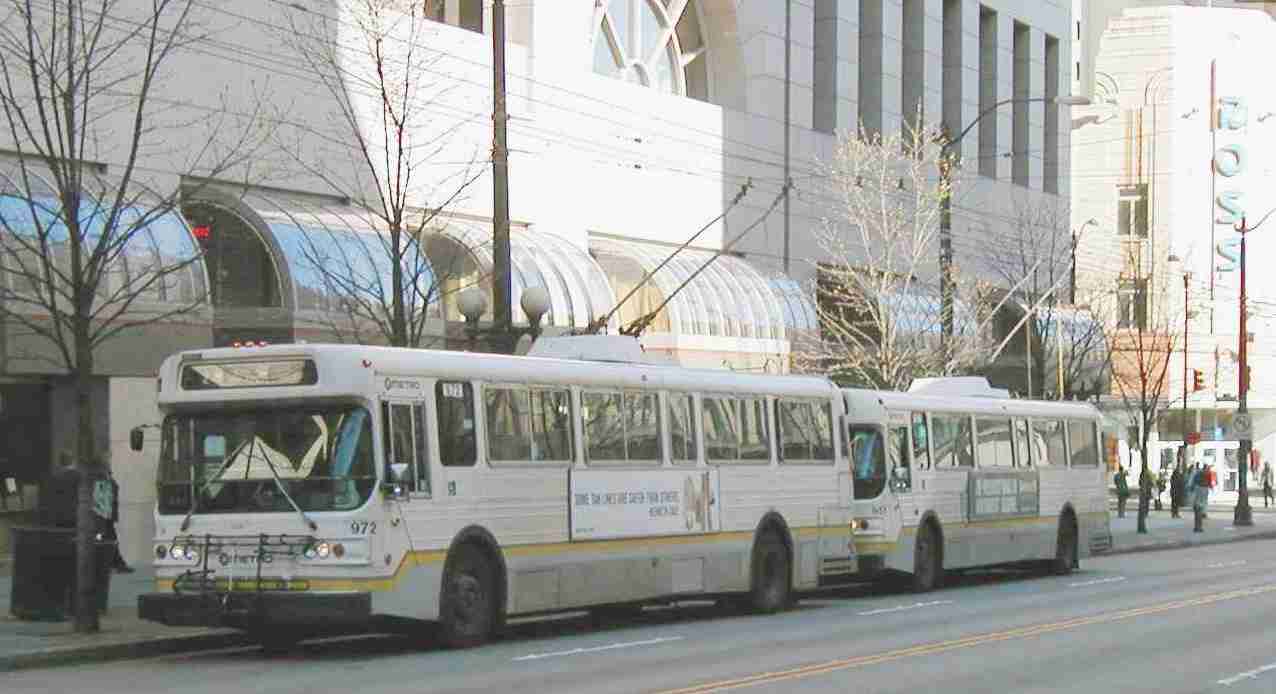
Two of the AM Generals, 972 & 951, on the main street. 972 is on route 2 to Queen Anne. The life expectancy of these could be measured in months, as they would be stripped down for parts to be fitted into Gilligs by the autumn of 2002.
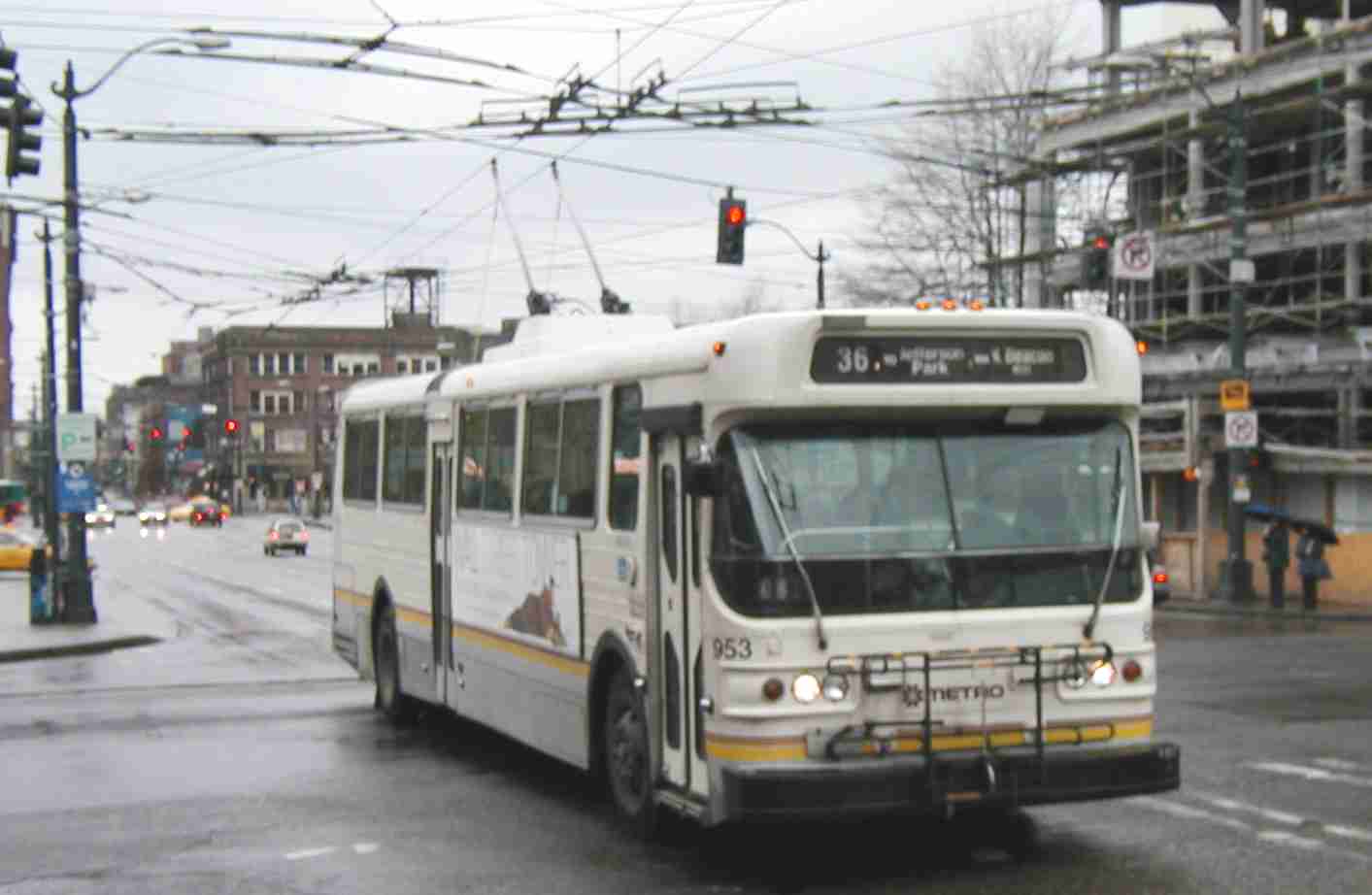
953 sets out up the long drag from the city on its way to Jefferson Park on the 36.
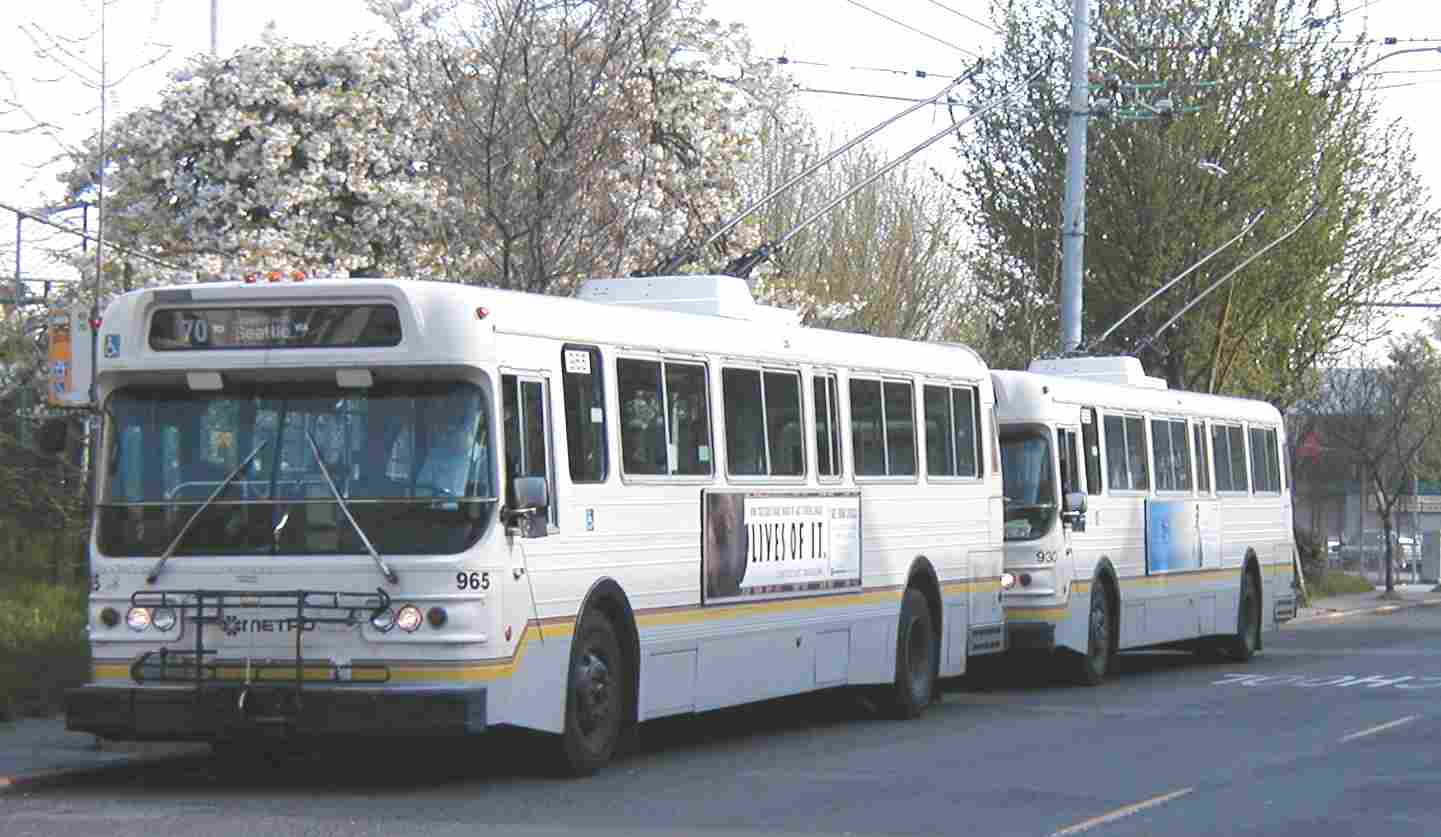
Two more AM's at the University end of the 70 - 965 & 930.
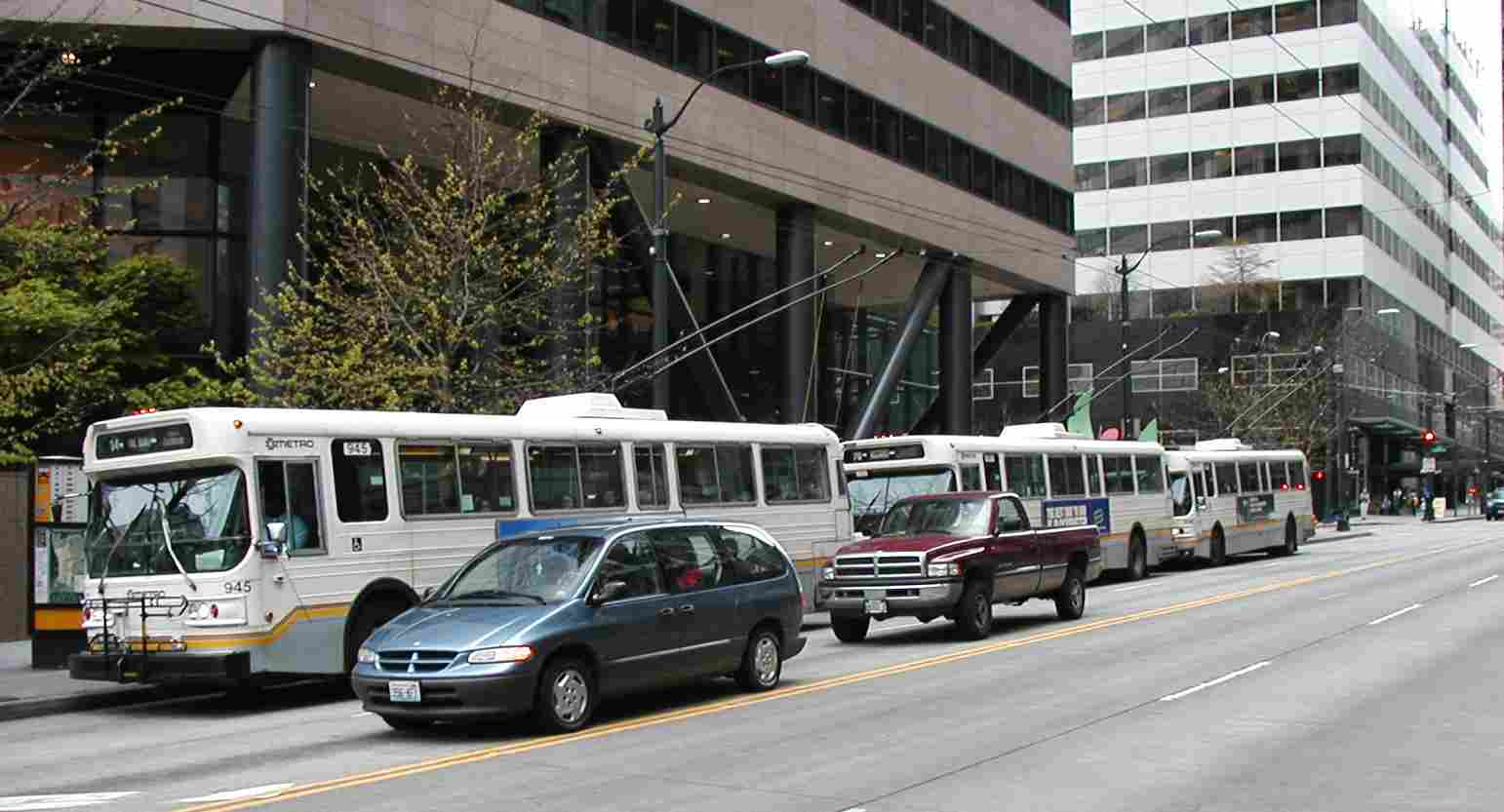
A trio of AM's led by 945 on a 14-Mt.Baker service in downtown Seattle.
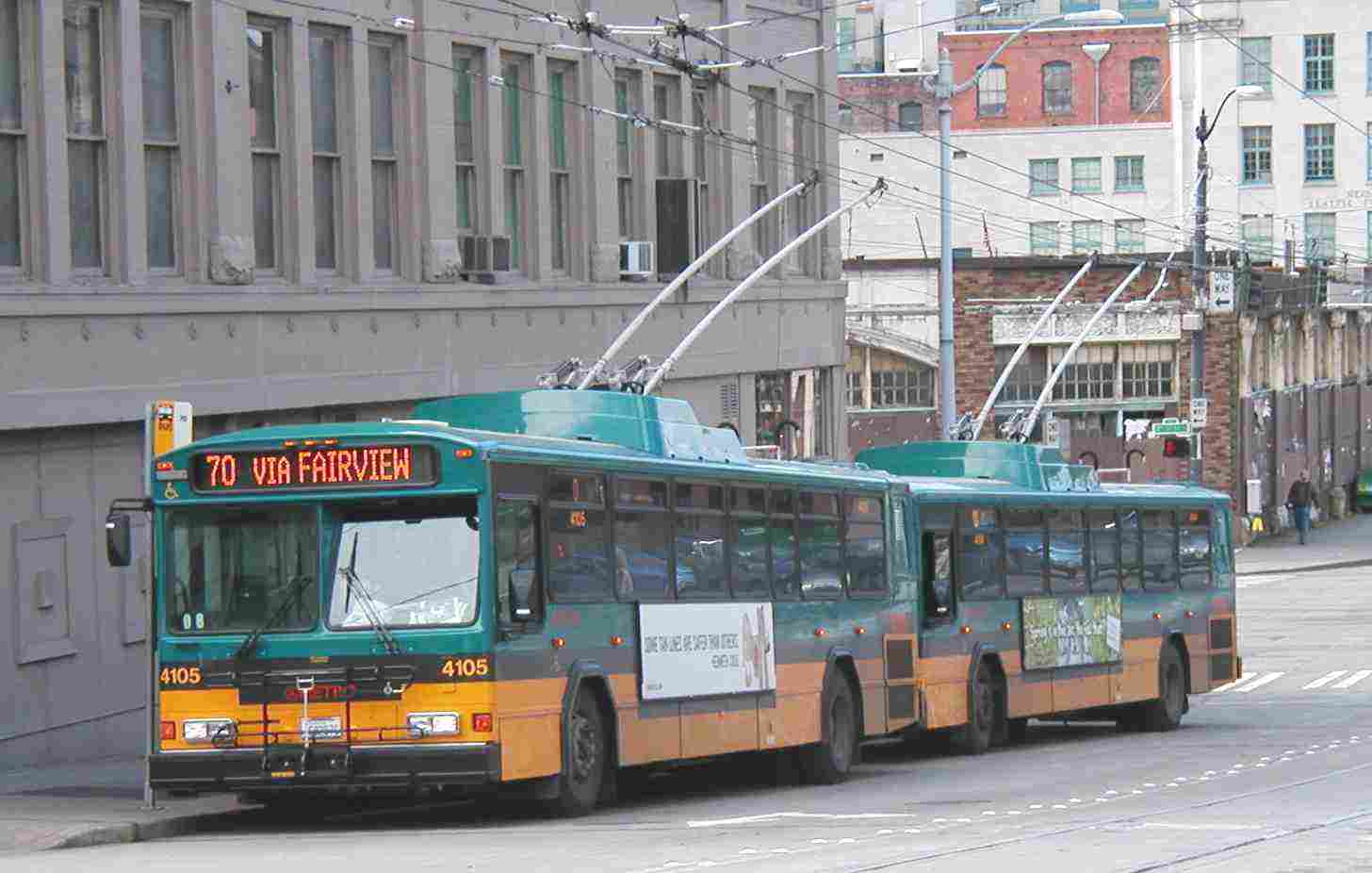
Two of the new Gillig trolleys, led by 4105, wait to set off from the city terminus of route 70.
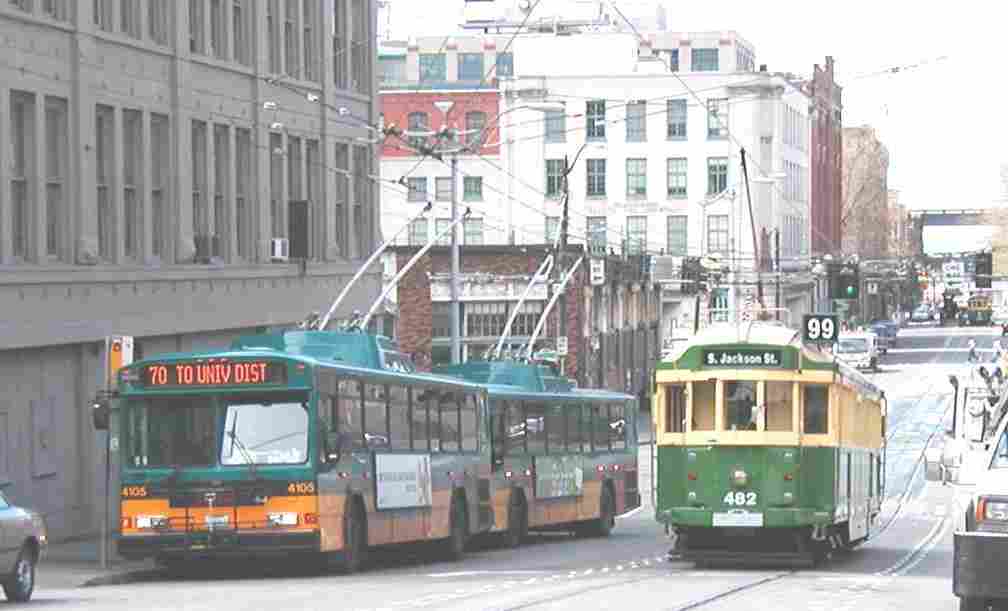
The same two trolleybuses with two ex-Melbourne trams on Waterfront service 99, the nearest of which is 482. They will pass in a loop at the bottom of the hill.
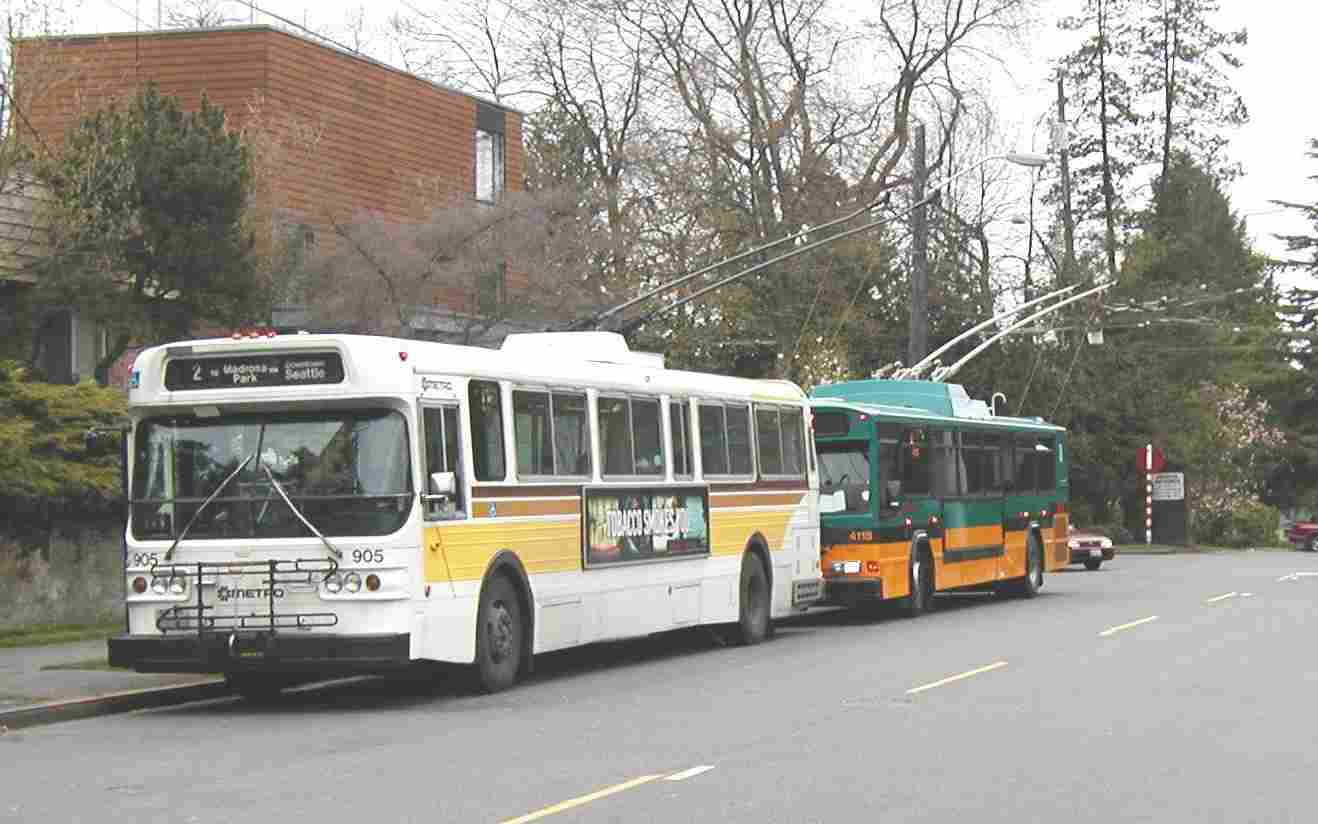
Almost the first AM (905) and almost the last Gillig at the time (4118) at the Queen Anne terminus of the 2. In fact 4118 is on route 1, and will return to the city in the opposite direction from here.
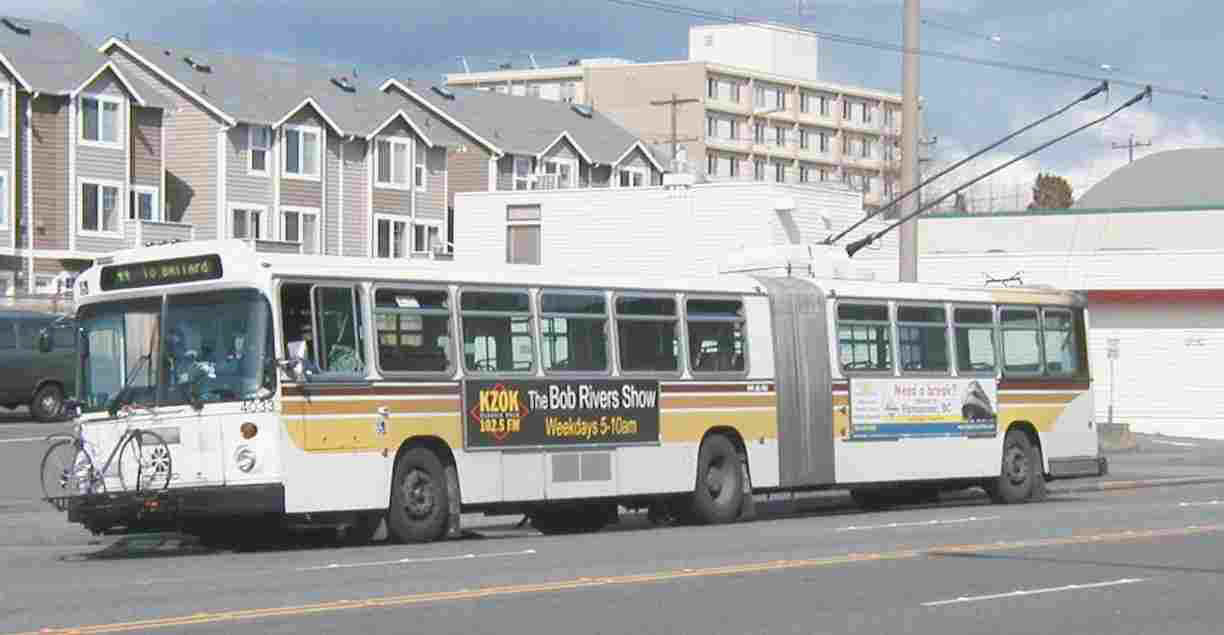
4033, one of the MAN articulated trolleybuses. Note the pushbike on the cycle rack, a universal feature fitted to all Seattle trolleybuses and buses. The rack is capable of holding two bikes when down, but when folded up it occupies hardly any space, as can be seen in the next picture.
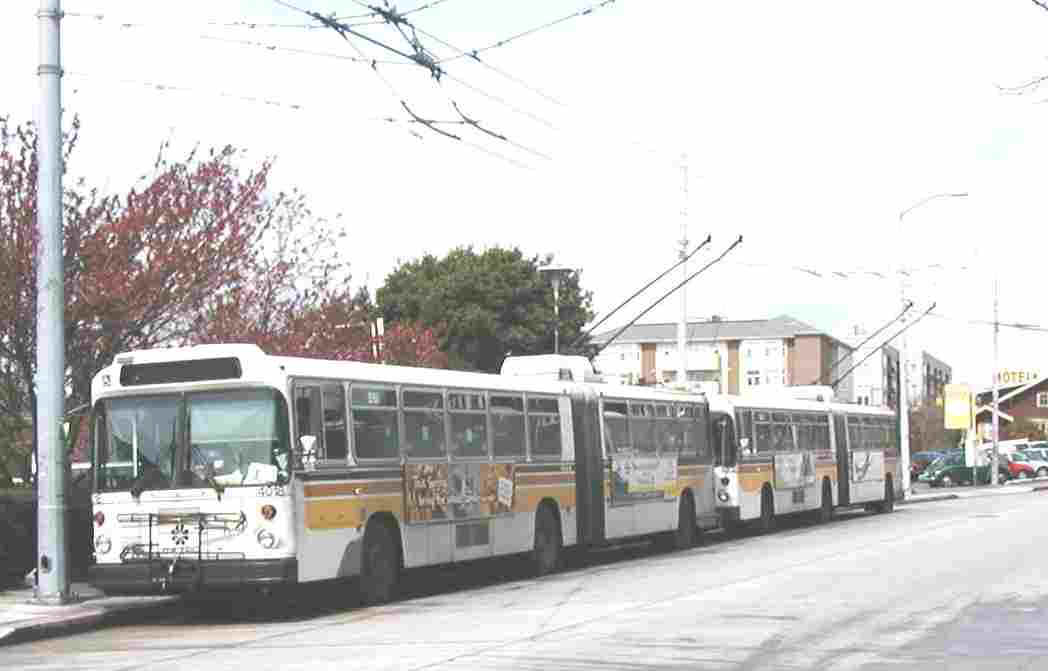
A pair of MAN's, including 4018, at the University end of the 43.
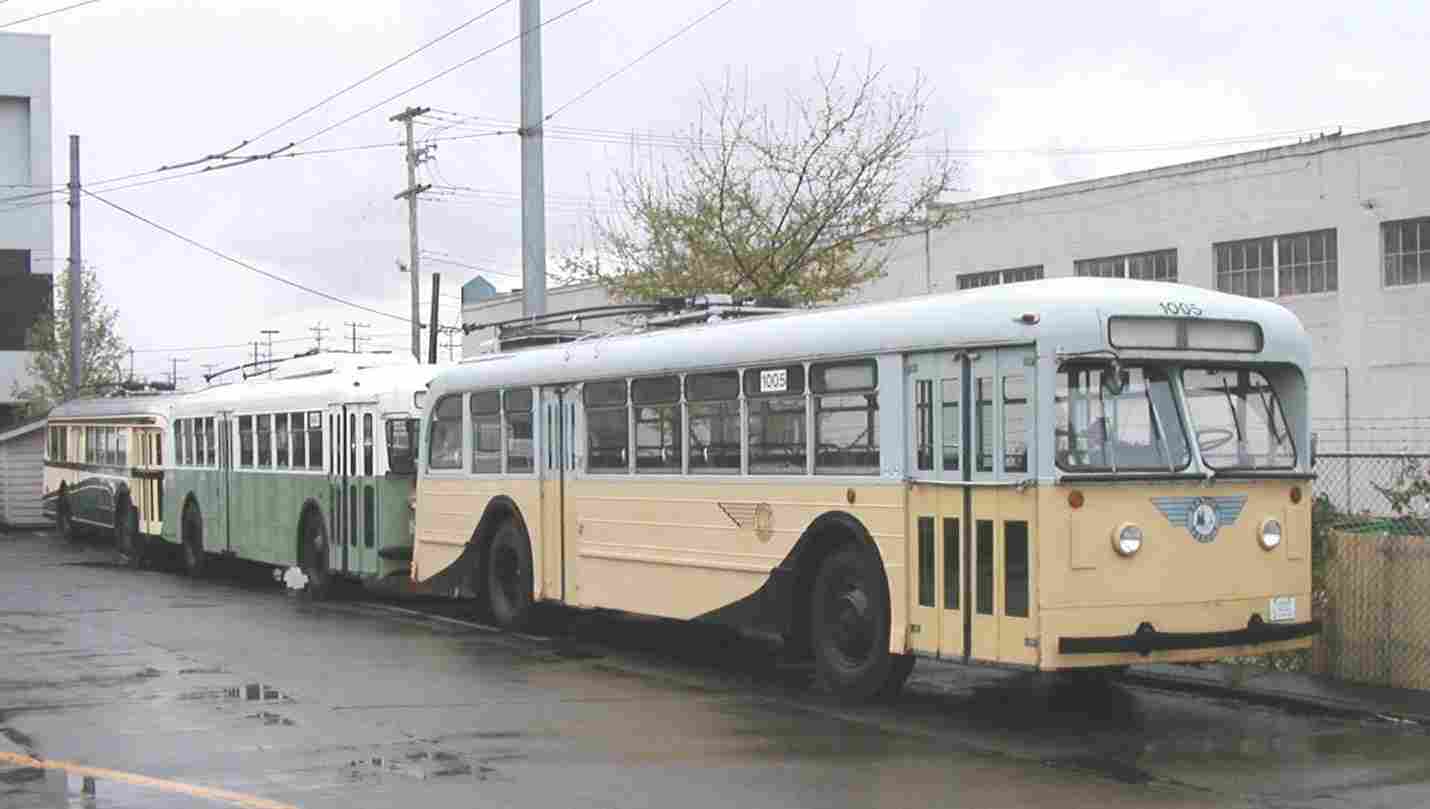
Seattle's preserved fleet - a Pullman Standard (1005), a Twin Coach (643) and a Brill (798). These get out and about periodically for 'exercise' and on occasional tours.
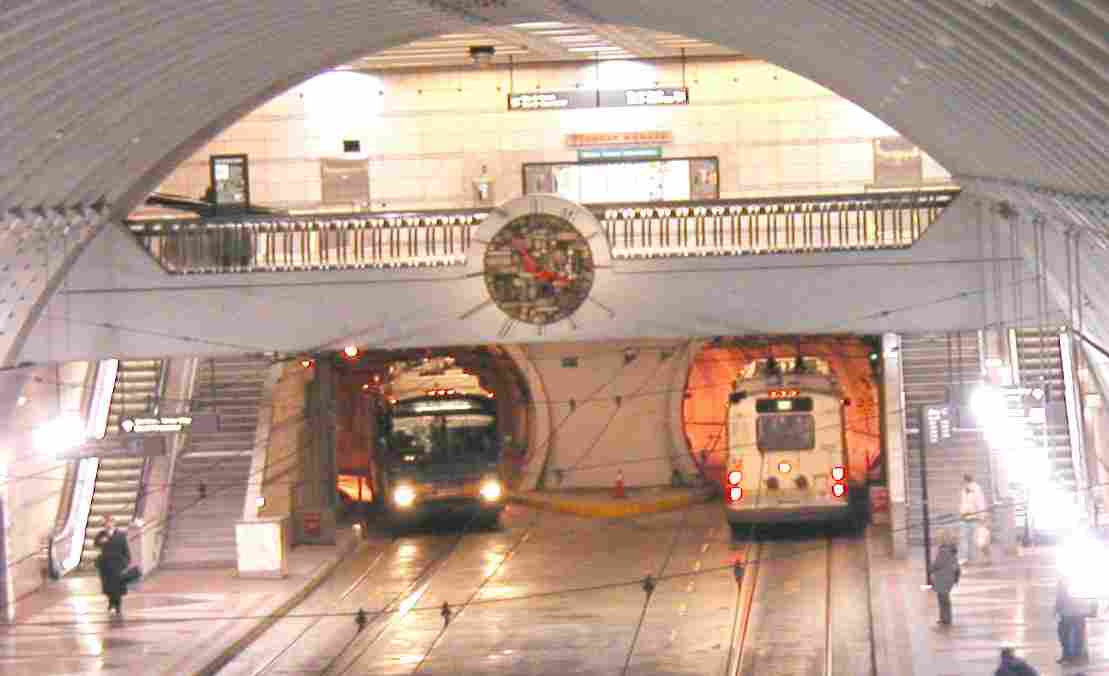
Two 'Tunnel Buses' on the overhead in the downtown tunnel at Pioneer station. The tunnel system is a magnificent construction, with marble walls and floors and art deco lighting and other features. The constant flow of trolleys silently emerging from and diving into the tunnels is quite eerie.
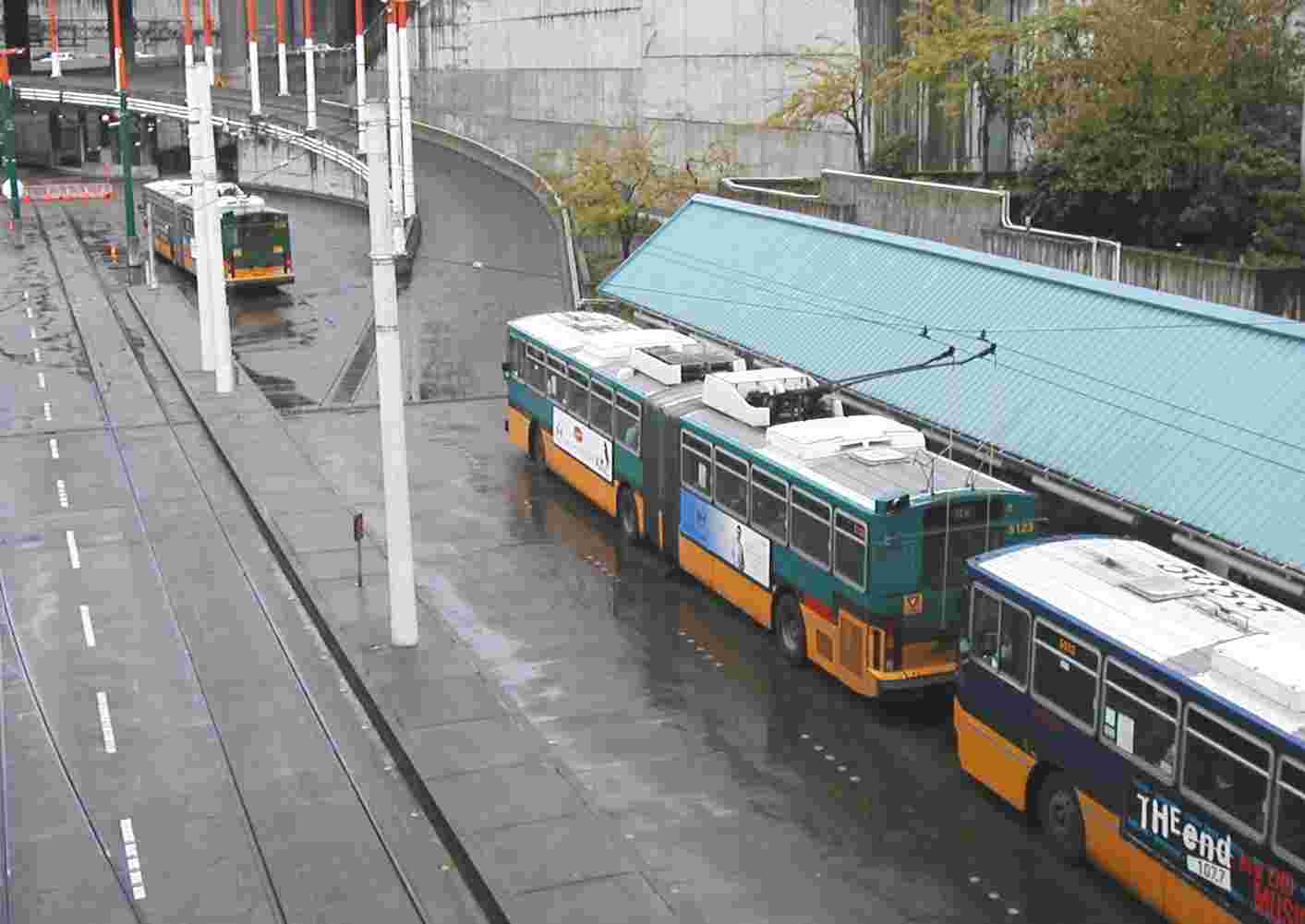
Three 'Tunnel Buses' which have just left the northern end of the tunnel. This is where they lower their poles and continue to the suburbs on diesel power.